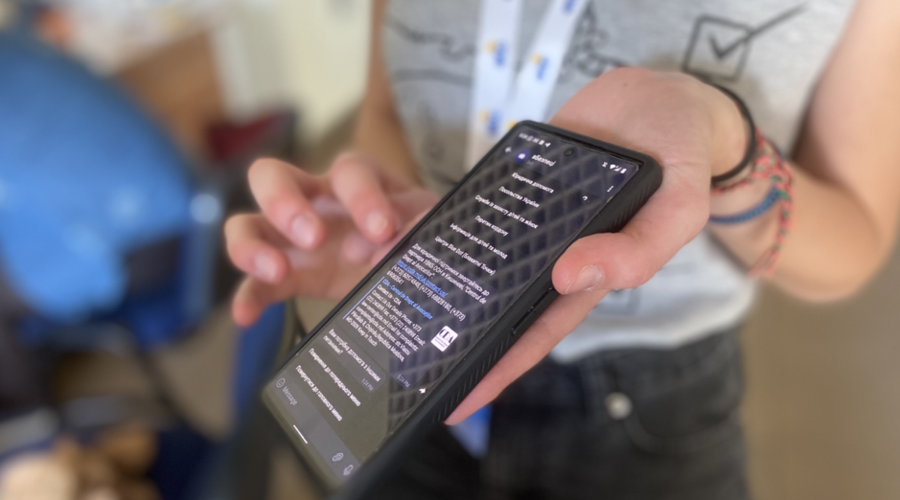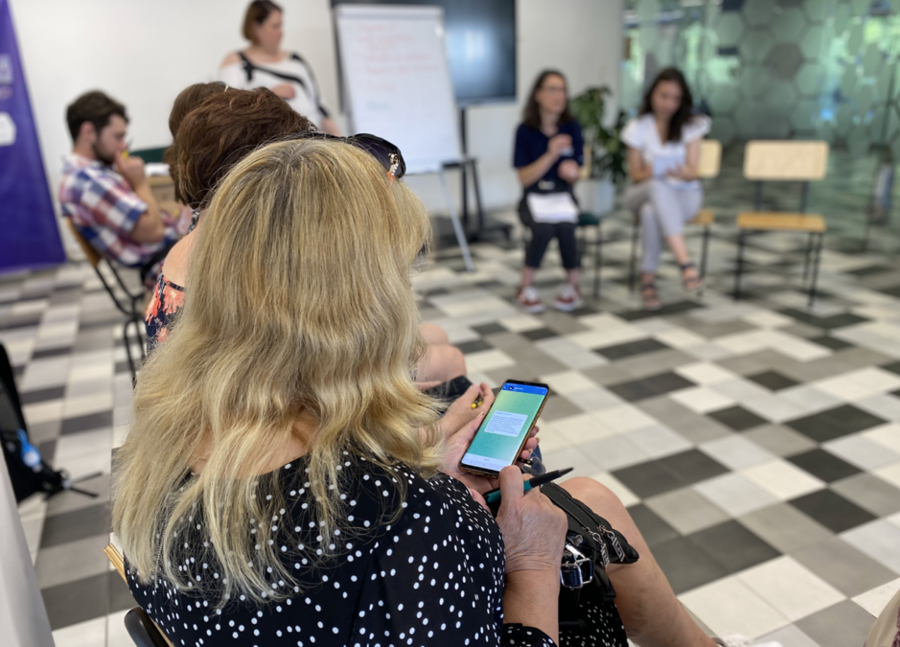Humanitarian chatbot: How tech bridges gap between people and the assistance they need in Ukraine

“I was a bit lost and scared when I first was looking for information,” Ulyana says from a centre for internationally displaced persons in western Ukraine, after being evacuated from her home in February.
“I missed a lot of information because I didn't know where to get it.”
More than 6 million people have left Ukraine since the start of the war with a similar figure displaced within its borders.
The World Food Programme-led Emergency Telecommunications Cluster (ETC) – a global network of 29 organizations that provide shared communications services in humanitarian emergencies – has launched a mobile chatbot that lets people fleeing the crisis know where, when and how to get all the support they need, all in one place. It is the only chatbot of its kind being used in the humanitarian response to the Ukraine crisis.

Called #vBezpetsi (#вБезпеці in Ukrainian), meaning "safe spaces", the chatbot allows people to apply for assistance directly from different humanitarian organizations in their native language, and through their own mobile devices, in an intuitive, user-friendly format on messaging apps.
For many like Ulyana, the chatbot offers help and hope amid the ongoing turmoil and threat of violence that plagues the now beleaguered country.
“It’s so helpful, and it saves so much time,” said one displaced volunteer, who tested the chatbot before it went live in June. “You no longer need to search for or line up physically for assistance.”
#vBezpetsi is just the latest iteration of the ETC Chatbot, already implemented in Libya, Iraq and Ecuador, to provide people with quick and accurate information on assistance in response to local crises. Each time, the chatbot – and name – are adapted to local contexts and needs.
In Libya, the chatbot became an official information tool for the Ministry of Health to disseminate the latest information on the Government’s COVID–19 response to people across the country.

At the same time, it allows humanitarian organizations to take a scalable, electronic, hands-off approach to fielding queries and delivering information that saves time and costs. Greater efficiency means redirecting funds to reach more people in need.
“The flexibility of the chatbot makes it useful in emergency response and protracted crises in places where mobile phones and internet are widely used among the local population,” says Jay Mahanad, ETC Chair, Chief Information Officer and Director of Technology of WFP.
Designed in partnership with the Accountability to Affected Populations Working Group, following consultation with communities and volunteers, #vBezpetsi is now available to anyone in need of support amid the crisis. The ETC is also launching a national campaign in Ukrainian to inform as many people as possible. “Our goal is to ensure people receive the support they need, wherever and whenever they need it,” says Jay. “Our sincere gratitude goes out to global and operational partners for helping us put the power of information into people’s hands.”
WFP is the lead agency of the Emergency Telecommunications Cluster – referred to as Sector in certain operations – a global network of organizations who work together to provide shared communications services in humanitarian emergencies.


